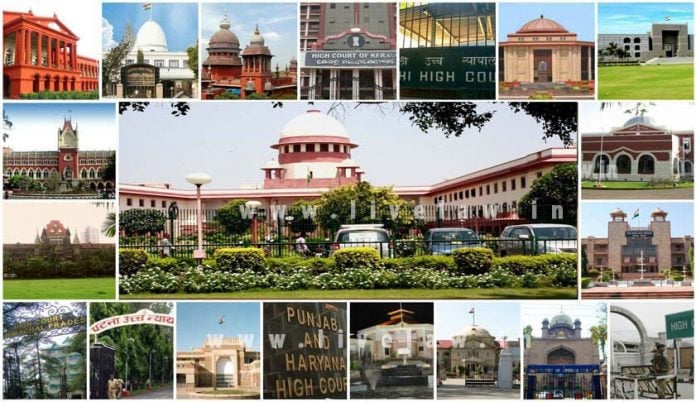The high courts of India are the principal civil courts of original jurisdiction in each state and union territory. In any case, a high court practices its original civil and criminal jurisdiction just if the subordinate courts are not approved by law to attempt such issues for absence of financial, regional jurisdiction. High courts may likewise appreciate original jurisdiction in specific issues, if so assigned explicitly in a state or government law.
Essentially, crafted by most high courts basically comprises of bids from lower courts and writ petitions regarding Articles 226 and 227 of the constitution. Writ jurisdiction is additionally an original jurisdiction of a high court.
Each state is separated into legal districts managed by a district and meetings judge. He is known as district judge when he directs a civil case, and meeting’s judge when he manages a criminal case. He is the highest legal authority under a high court judge. Beneath him, there are courts of civil jurisdiction, known by various names in various states. Under Article 141 of the constitution, all courts in India — including high courts — are limited by the decisions and requests of the Supreme Court of India by priority.
Judges in a high court are delegated by the President of India in meeting with the Chief Justice of India and the governor of the state. High courts are going by a central equity. The central judges rank fourteenth (inside their particular states) and seventeenth (outside their individual states) on the Indian request of priority. The quantity of judges in a court is chosen by separating the normal organization of principle cases during the most recent five years by the public normal, or the normal pace of removal of fundamental cases per judge every year in that High Court, whichever is higher.
The Calcutta High Court is the most seasoned high court in the nation, set up on 2 July 1862. High courts that handle various instances of a particular district have lasting benches set up there. Benches are additionally present in states which go under the jurisdiction of a court outside its regional cutoff points. More modest states with scarcely any cases may have circuit benches set up. Circuit benches (known as circuit courts in certain parts of the world) are impermanent courts which hold procedures for a couple of chosen a very long time in a year. Accordingly cases developed during this interval period are judged when the circuit court is in meeting. As indicated by an investigation directed by Bangalore-based N.G.O, Daksh, on 21 high courts as a team with the Ministry of Law and Justice in March 2015, it was discovered that normal pendency of a case in high courts in India is 3 years.
The structures of Bombay High Court (as part of the Victorian and art deco outfit of Mumbai) and Punjab and Haryana High Court (as part of the architectural work of Le Corbusier) are UNESCO World Heritage Sites.
The Madras High Court in Chennai, Bombay High Court in Mumbai, Calcutta High Court in Kolkata and Allahabad High Court in Prayagraj are the most seasoned four high courts in India.
All High Courts
Coming up next are the 25 high courts in India arranged by name.
1. Allahabad High Court
2. Andhra Pradesh High Court
3. Bombay High Court
4. Calcutta High Court
5. Chhattisgarh High Court
6. Delhi High Court
7. Gauhati High Court
8. Gujarat High Court
9. Himachal Pradesh High Court
10. Jammu and Kashmir High Court
11. Jharkhand High Court
12. Karnataka High Court
13. Kerala High Court
14. Madhya Pradesh High Court
15. Madras High Court
16. Manipur High Court
17. Meghalaya High Court
18. Orissa High Court
19. Patna High Court
20. Punjab and Haryana High Court
21. Rajasthan High Court
22. Sikkim High Court
23. Telangana High Court
24. Tripura High Court
25. Uttarakhand High Court


